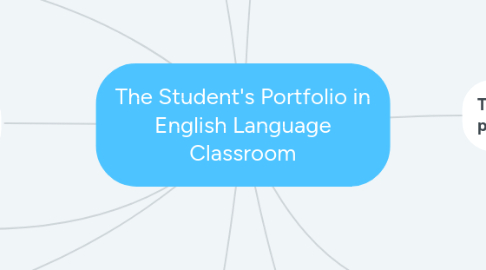The Student's Portfolio in English Language Classroom
por Rosa Isela López


1. The Portfolio involves collecting samples of students’ work and experiences which reflect, through the things they do and say, the ways in which they think.
2. - Growth and development in relationship to key curriculum expectancies and indicators. - Understanding and application of key processes. - Completeness, correctness, and appropriateness of products and processes presented in the portfolio. - Diversity of entries (e.g., use of multiple formats to demonstrate achievement of designated performance standards). It is especially important for teachers and students
3. Definition:
4. Characteristics of Effective Portfolios:
4.1. 1. the selection of portfolio content, 2. the guidelines for selection 3. the criteria for judging merit, and 4. evidence of student reflection
5. Portfolio Assessment
6. Authenticity
6.1. Judgment is focused not just on the acquisition of skills and facts but on (1) modes of thinking expressed in any language or work strategy that aids in the completion of a task, however unconventional these may be, (2) on the diligence exhibited in all tasks, and (3) the degree of growth and improvement relevant to set objectives.
7. Purpuses:
7.1. - Encouraging self-directed learning. - Enlarging the view of what is learned. - Fostering learning about learning. - Demonstrating progress toward identified outcomes. - Creating an intersection for instruction and assessment. - Providing a way for students to value themselves as learners. - Offering opportunities for peer-supported growth.
8. Types of portfolios:
8.1. The two main types of portfolios are: 1. The process portfolio which documents the stages of learning and provides a progressive record of student growth. 2. The product portfolio which demonstrates mastery of a learning task or a set of learning objectives and contains only the best work.
9. How to Develop a Portfolio
9.1. 1. Organization and Planning
9.1.1. 2. Collection
9.1.1.1. 3. Reflection

